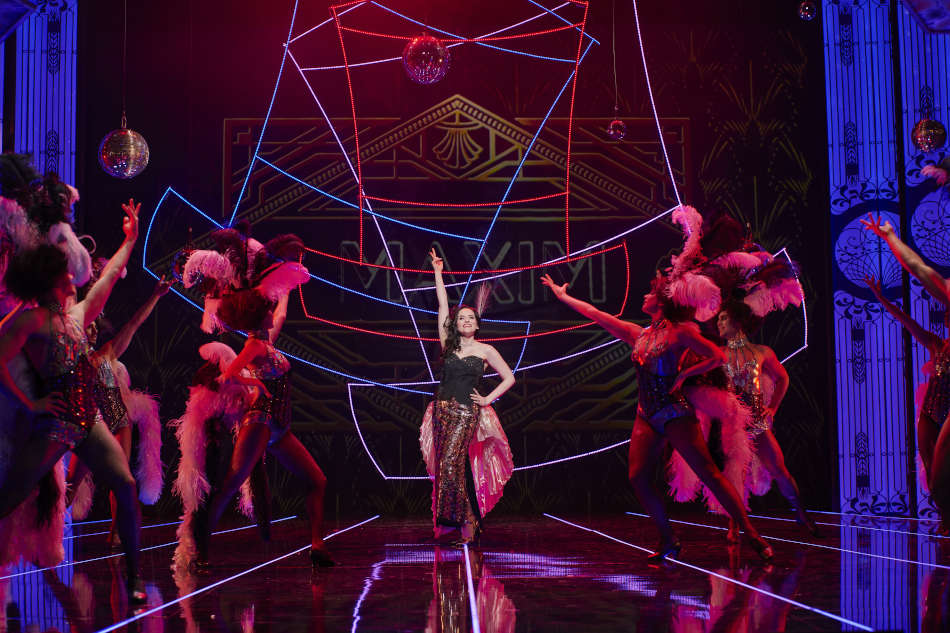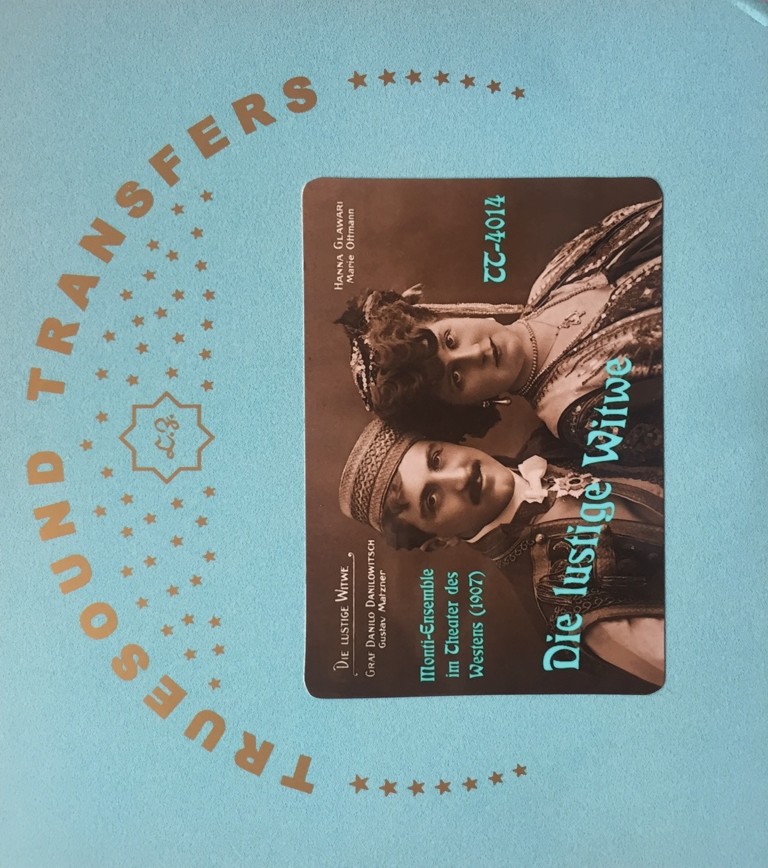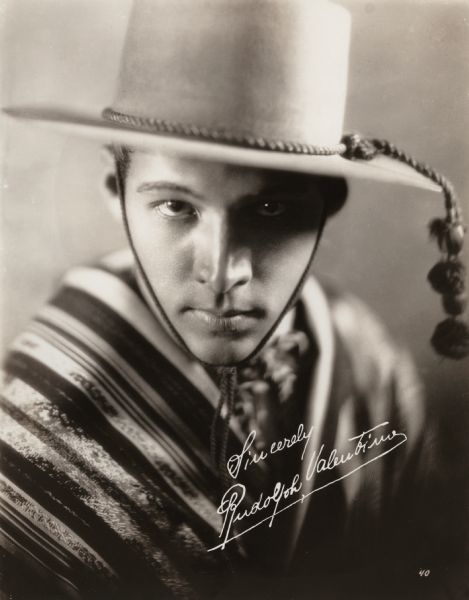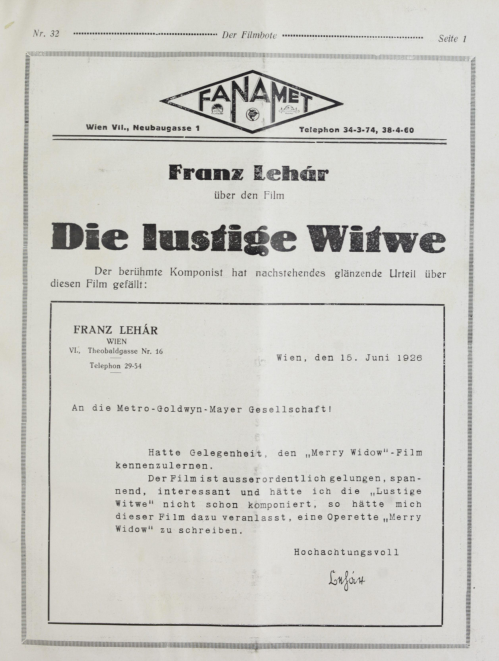Kevin Clarke
Operetta Research Center
31 January, 2022
At Theater Dortmund a new version of Die lustige Witwe presents the Lehár show as “a revue operetta” with a 1920s twist. At least that’s the plan and official goal. Musically, the version created by Henning Hagedorn and Matthias Grimmer is based on the recordings of the 1928 Fritzi Massary/Erik Charell version. There is no piano score of that, there are no orchestral parts, there’s only a “Textbuch der Gesänge” with the new lyrics by Rudolf Schanzer and Ernst Welisch. And thanks to Truesound Transfers we know what most of the numbers sounded like then. What does it all sound like today – and how does it work as a full stage production, beyond the reconstructed songs and duets?

Rebecca Nelsen as Hanna Glawari in Dortmund. (Photo: Björn Hickmann / stage picture / Theater Dortmund)
Of the 1928 version, that premiered at Berlin’s Metropoltheater, there is a program which gives a detailed description of the individual scenes, however there is no textbook with the dialogue used for the Charell update in which Hanna is a vaudeville dancer from Honduras, South America. She appears there, in a nighclub, with a jazz band, black musicians, and chorus of gaucho boys. Very much à la Mae Murray in the 1925 Erich von Stroheim movie, where the widow is an American vaudeville artist travelling to Europe with a jazz band.
While Stroheim explains – in great detail – what happened between Hanna and Danilo before the actual operetta story begins, stage director Thomas Enzinger has Jenny W. Gregor re-write the prequel as a rough sketch in which Hanna can be seen in a run-down venue in Honduras, singing the frivolous song “Mein Freund aus Singapur” (as indicated in the “Textbuch der Gesänge”). There are no black musicians, there are no gauchos, and there is no South American flair reminiscent of the famous Rudolph Valentino movie The Four Horsemen of the Apocalypse (1921) which probably inspired Charell/Massary, just like Stroheim and his Merry Widow did.
Camille is somehow there too, and in love with Hanna. Danilo, their rich heir of landowners in Honduras, has already left for Paris where we encounter him later.
In this new opening scene, we see Hanna marry the rich banker who dies before our eyes – much less dramatically than in the Stroheim movie. And then we’re swept away to France. Where the rest of the show unfolds pretty much as usual, only with the musical numbers switched around, following the 1928 model. To fill the audience in on what has just happened there is the new role of a conferencier named Adán (played by Morgan Moody), evoking the world of Cabaret, but nowhere near as sinister as Joel Grey.
As things progress, the linking dialogue scarcely tries to make sense of the new order of songs and re-arranged story. It just assumes that audiences know the basics of the plot and won’t ask too many questions. And when things get really confusing, there’s always a re-appearance of Adán to set the record straight.

The cover of the Truesound Transfers “Lustige Witwe” album.
Mr. Enzinger as stage director doesn’t ask any questions either. He just lets everything happen and hopes that the flashy choreography by Evamaria Mayer (and her energetic dance crew) will save the day with quotations from Beyoncé, Lady Gaga and Bob Fosse.
Rebecca Nelsen as Hanna can move well in the context of the dance numbers, she even ventures into a copy of the famous “Mein lieber Herr” choreography for “Mein Freund aus Singapur”, minus the Sally Bowles outfit (that only the dancers wear). But Miss Nelsen lacks Liza Minnelli’s superstar charisma, which makes it a bit painful to watch her try flaunting her body at the audience Fosse style. (To be fair, very few people in any generation can command the stage like Liza with a Z, so it’s possibly not the greatest idea to invite such direct comparison.)
For the rest, Miss Nelsen possesses an attractive soprano voice, but delivers her numbers without the Massary magic or textual nuance. She’s also not the greatest actress when it comes to delivering dialogue. So any hint of emancipation and the “New Woman” of the 1920s goes out the door. What remains is: a widow as always, charming and attractive, but little more. As far removed from Massary or the original Mizzi Günther as possible, in terms of vocal delivery and interpretation. And certainly without any hint of Roaring Twenties decadence.
Sooyeo Lee as Valencienne get’s a grand dance number with “Halt still!”, that sounds like it might have been composed by Jerome Kern. It’s pretty marvellous. But instead of making Miss Lee and Sungho Kim as Camille an interesting alternative couple – Charell had Max Hansen as Camille! – they sort of just stand around helplessly. Rescued by the dance team. But they both sing well, which is a plus!

Publicity portrait of Rudolph Valentino in the 1921 Metro Pictures production “The Four Horsemen of the Apocalypse”. (Photo: Wisconsin Center for Film and Theater Research / Wiko Commons)
Matthias Störmer is a blond dream boat – not quite believable as a rich gaucho from Honduras whose family runs the country and forbids him to marry the showgirl. His costumes (by Toto) also don’t try to evoke any South American associations. Instead, Mr. Störmer tries to infuse the role with effective European operetta Schmalz. If you like that sort of thing (and many do!) you’ll probably love him and his easy singing. And Miss Nelsen by his side.
Though Massary decided she did not want to sing “Vilja”, Miss Nelsen opens the second half of the production with that number, a soaring top B included. She’s more in her element here than in the re-written “Männermarsch” where she’s supposed to present a snaring feminist reading of the chavinistic septet (“Ja, das Studium der Männer ist nicht schwer!”), but her voice is too lush and operatic to make such content provocative. Or believable.
The new orchestrations and arrangements sound flashy, even if the size of the orchestra had the be cut by half because of last minute Corona regulations. It would be interesting to see/hear this version again with a “jazzier” Hanna, someone with a little more “extra” like Christoph Marti or Katharine Mehrling, to name just two. Whatever happens with this new musical adaptation next: it needs a proper new libretto with substance and genius, just having a conferencier fill in the gaps and copying the best jokes from the original Victor Léon/Leo Stein skript is not enough.
Maybe Mr. Enzinger will give his production a new chance at his Lehár Festival in Ischl; it’s not on the program for this summer season. But who knows what happens next year.

Lehár expressed his admiration for the 1925 Erich von Stroheim movie and the update of his “Merry Widow” in a letter re-printed in the Viennes papers when the movie opened in Austria. (Photo: Operetta Research Center Archive)
As for Miss Nelsen and Mr. Störmer, they are both probably better suited for the regular Witwe sung in the “tradition” most opera goers have grown accustomed to over the past decades, with honeyed tones and polish, instead of Massary’s (or Max Hansen’s) provocative Weimar Republic irreverence. (Hansen recorded the Danilo music, even though he sang Camille on stage; he gives a good indication of what the Charell version was all about.)
Before the premiere, Theater Dortmund organized a symposium in which Mr. Hagedorn and Mr. Grimminger outlined the difficulties of reconstructing the work and making Lehár sound like a real 1920s jazz composer. Stefan Frey spoke of other versions in London, Berlin and New York. Florian Ziemen managed to outline how conductors can approach such music and get the orchestra to play it convincingly, and Kevin Clarke spoke of various Hollywood film versions and later MGM plans to make Barbra Streisand and Julie Andrews slip into the role of Hanna Glawari. Sadly, that never happened… But, of course, Mae Murray, Jeanette MacDonald and even Lana Turner are each very special. All of them posses that big “extra” needed to turn Merry Widow into a world-class affair.

Sir, respectfully, this review is an insult! You are clearly not a singer or artist whatsoever. Comparing everything to the best you ever saw in a YouTube video or what you read in a book is not what a music critic is supposed to be doing, that’s a music historian’s job! I saw the show and I was absolutely stunned by how the singer’s and dancers were able to pull off a show like that during a global pandemic. You, sir, are personally insulting artists who gave their all for their audience. What you are writing about the two main characters is just simply wrong and everyone who has the slightest idea about singing and performing will attest to that. Critics like you are the reason why so many artists just don’t read reviews anymore. Please do better!